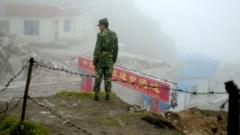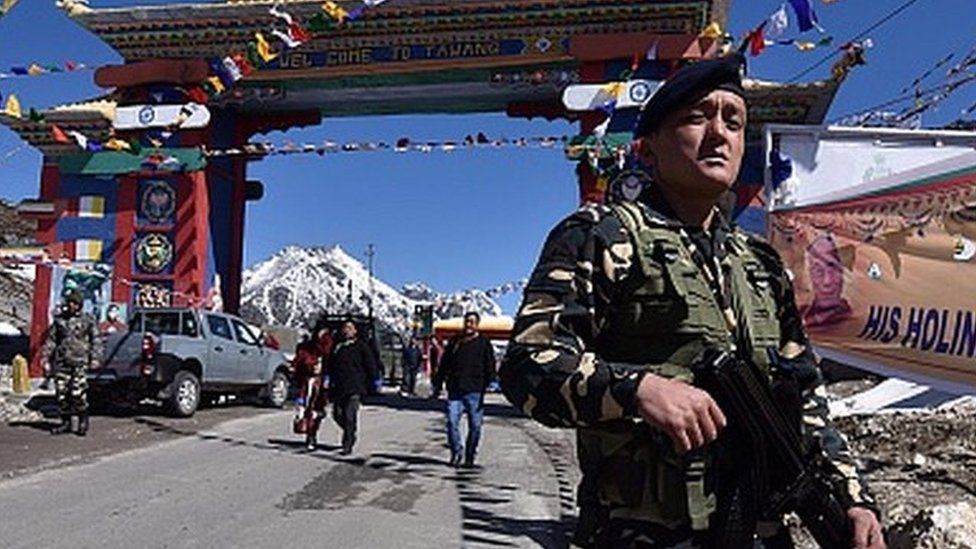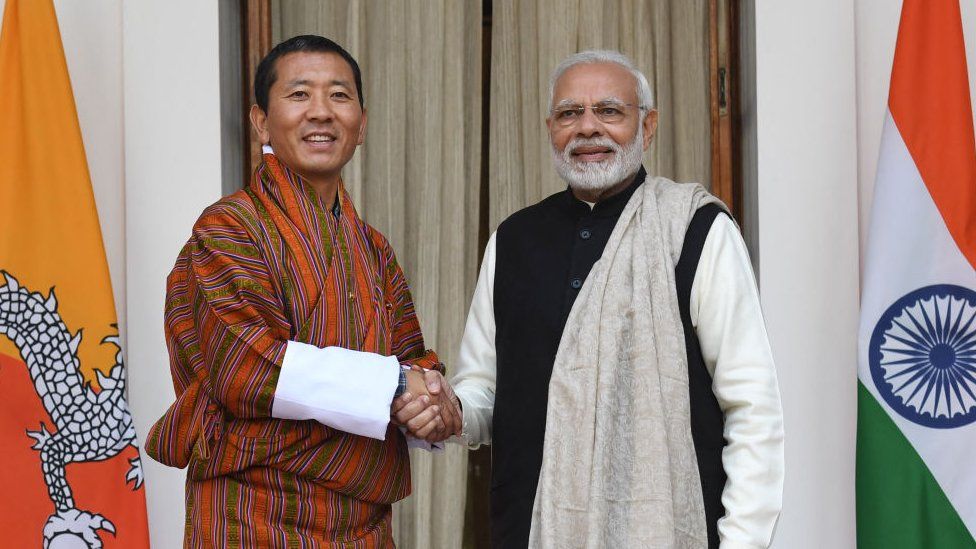
The Himalayan nation of Bhutan is nestled between two Asian giants, China and India. But that unique geographical position also comes with a price.
Bhutan is one of the two countries with which China is yet to resolve its land border dispute. The other country is India, which has a long-running disagreement over its Himalayan frontier with China.
China’s global rise is putting pressure on Bhutan to reach a deal with Beijing, but any possible breakthrough will need the approval of its ally India.
Thimphu and Delhi share a close relationship and India has been offering hundreds of millions of dollars of economic and military aid to Thimphu.
Bhutan and China have disputes over territory in the north and in the west in the Himalayas.
Among all the contentious places, the key issue is a strategic plateau called Doklam – situated close to the tri-junction between India, Bhutan and China. Bhutan and China claim the region and India supports Thimphu’s position.
India has its own reasons to back Thimphu. Experts say the Doklam plateau is of great security importance to India as any dominance of the region by the Chinese could pose a threat to Siliguri Corridor, known as the Chicken’s Neck, a 22km (14-mile) stretch that connects the Indian mainland with its north-eastern states.
A recent interview given by the Bhutanese Prime Minister Lotay Tshering to a Belgian newspaper La Libre has only reminded the country about its limitations.
“It is not up to Bhutan alone to solve the problem. We are three. There is no big or small country, there are three equal countries, each counting for a third. We are ready. As soon as the other two parties are also ready, we can discuss,” Mr Tshering was quoted as saying.
He also expressed hope that Bhutan and China will be able to demarcate some of its boundaries in a meeting or two. The two countries have been holding border negotiations since 1984. Mr Tshering also said that there was no Chinese intrusion of its territory.
The comments by Mr Tshering have triggered alarm bells in India, particularly in the media, with many commentators expressing concern over the possibility of any swap agreement with Bhutan and China involving the tri-junction. Some of them say Thimphu is not pressing hard enough over its claims on Doklam.

“India is concerned that China is pressuring Bhutan to settle the boundary to harass New Delhi,” said P Stobdan, a former senior Indian diplomat and an expert on Himalayan affairs.
“Clearly, the Bhutanese are intending to speed up the process of resolving their differences and there have been some changes in the Bhutanese stance lately with regards to China’s role in settling the dispute,” Mr Stobdan said.
Following the furore in the Indian media, Mr Tshering earlier this month clarified his comments.
“I have said nothing new and there is no change in [Bhutan’s] position,” the prime minister told The Bhutanese weekly.
While many Bhutanese were surprised by the reaction to Mr Tshering’s comments in the Indian media, the view from China is that Thimphu will struggle to reach a deal without Delhi’s backing.
“India is the hurdle here. If China and Bhutan also resolve the border issue, only India will be left. I don’t think India will let this happen,” Liu Zongyi, a senior fellow at the Shanghai Institutes for International Studies, told the BBC.
China and Bhutan were close to reaching a final agreement around 1996, but failed due to India’s intervention, he said.
The Bhutan-China border issues are also linked to the decades-old India-China tensions over the border.
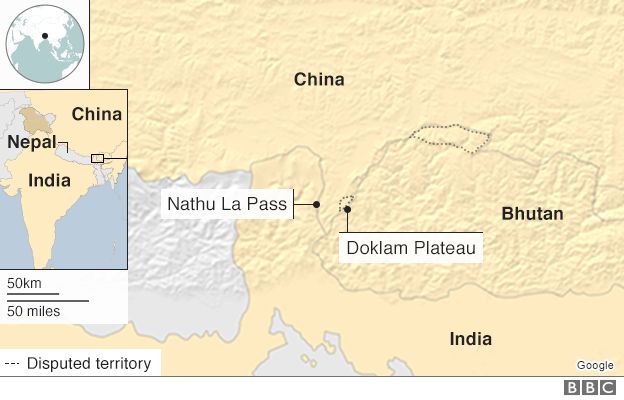
The two countries share a frontier that isn’t fully demarcated, and have overlapping territorial claims. India says it is 3,488km long; China puts it at around 2,000km.
The de-facto border starts from India’s northern Ladakh region and runs all the way to the state of Arunachal Pradesh (which the Chinese call Southern Tibet) in the east.
China’s growing economic and military might is also being keenly watched by many Bhutanese who feel that settling for a deal with Beijing soon will be better for the country.
“China is a reality. Does Bhutan have that option of not to have diplomatic relations with China? I don’t think that it is a desirable arrangement,” said a Bhutanese expert who didn’t want to be identified.
India and Bhutan signed a special treaty in 1949 that takes Delhi’s security concerns into account. A revised treaty in 2007, gave Thimphu more freedom in areas of foreign policy and military purchases.
Hundreds of Indian soldiers have been stationed inside Bhutan and officials say they offer training to Bhutanese troops. Its military headquarters is in the western town of Haa, about 20km from Doklam.
Bhutanese commentators like Wangcha Sangey feel that Bhutan can achieve a border settlement with China, if it were not for Delhi’s reported insistence that Bhutan retain Doklam.
“How we make claims on Doklam? What we have now as part of Doklam is still with us. What we don’t have, we cannot take it from China,” he said.
Analysts like Mr Sangey argue that as Bhutan currently banks on imports from India for most of its needs, particularly for oil, Thimphu should diversify its supplies by opening another route with its northern neighbour China.
The Bhutanese PM’s comments have elicited a cautious response from India’s foreign ministry.
“India and Bhutan remain in close touch, close co-ordination relating to our shared national interests including security interest,” Vinay Mohan Kwatra, permanent secretary to the Indian External Affairs Ministry, told journalists in early April.
“I would reiterate our earlier statements which explicitly and clearly bring out our position on the determination of the tri-junction [Doklam] boundary points,” Mr Kwatra said.
India doesn’t want any major realignment around Doklam because of its great strategic importance. On the other hand, for a country like Bhutan it may be difficult to put pressure on Beijing to give up its claim.
Bhutan may be in a great position sharing a border with two of the world’s emerging economies at a time when people are talking about an Asian century. But with tensions between Delhi and Beijing persisting, Thimphu finds itself increasingly in a vulnerable situation.
BBC News India is now on YouTube. Click here to subscribe and watch our documentaries, explainers and features.

Read more India stories from the BBC:

-
-
14 December 2022
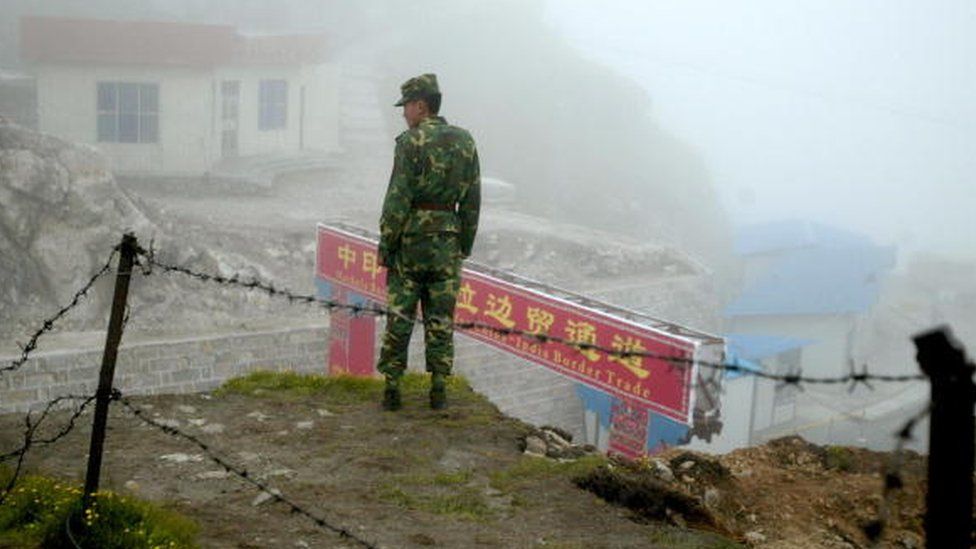
-

